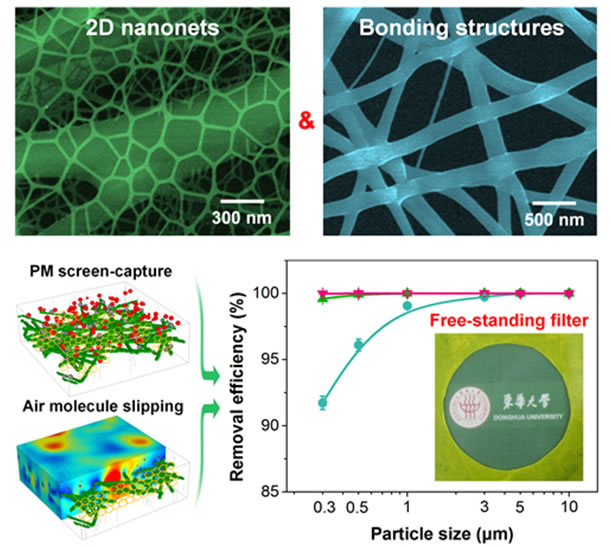Recently, Prof. Bin Ding and Dr.Xia Yin from our collegehas made an important progress in the research offree-standing Polyurethane Nanofiber/Nets Membrane for Air Filtration. This work was published with the title of “Free-Standing Polyurethane Nanofiber/Nets Air Filters for Effective PM Capture” in Small. (Small2017,13,1702139).
PM2.5 (aerodynamicdiameter smaller than 2.5mm) is more hazardous in the air pollution. Traditional filter material still have many shortcomings, for example, ultrafine particles of low filtering efficiency, low quality factor, poor safety performance. Electrospinning/netting technology as a way to prepare a large number of ~20 nm fiber and uniformmesh structure like Steiner, attracted the attention of many researchers, but it also have some problemswhich need to be solved, such as the low coverage of nanonet andseriously dependence on substrate, which prevent to enhance its transparency and improve itsfiltration performance, which severely limit its application in the field of air filtration, however, ithas proven to be extremely challenging.

Schematic illustration of the structure of free-standing PU nanofiber/nets filters and theperformance demonstration
Therefore, using PU as the main polymer, by controlling the content of lithium chloride and the type of receiving substrate, the researchers developedfree-standing PUnanofiber/nets filters with high coverage of nanonet, good mechanical and transparentproperties. The resulting free-standing PUnanofiber/nets filters exhibit high PM1 removal efficiency of >99.00% and PM2.5removal efficiencyof >99.73%, maintaining high light transmittance of ~70% and low pressure drop of 28 Pa; evenachieve >99.97% removal efficiency with ~40% transmittance for PM0.3filtration, by virtue of the synergistic effects of nanonets structures, high PUpolarity, and free-standing capacity, making them promising high-efficiency and transparentfiltration materials for various filtration and separation applications.
This work is supported by the Key Technologies R&D Programof China (Grant Nos. 2015BAE01B01 and 2015BAE01B02),the National Natural Science Foundation of China (Grant Nos. 51673037 and 51503030), the Fundamental Research Funds forthe Central Universities and the Shanghai Sailing Program (Grant No. 15YF1400600).

